Basic knowledge
There are some essential cornerstones on which western music is based: the scale, the tonality and the interval
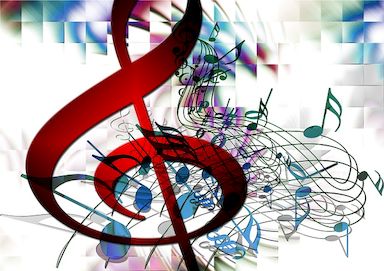
1. Scale and tonality
Since music is made up of relations among sounds, scale and tonality are the foundations to organize sounds of different pitches.
A scale is a succession of notes comprised in one octave and, since every tune is made up of part of scales, it is essential to know them in depth whether we want to perform a piece or just want to compose one. Every ‘degree’ of the scale has a particular name: for example the first degree is called tonic, the fifth dominant, the seventh leading-tone.
The concept of tonality is strongly tied to the scale: in fact once we decide to use a scale, we also create a system of relationships between the different tones of the scales. The system of relations is called tonality.

2. The most common scales
Depending on the number of tones and the way in which these are related to one another, we can have different kind of scales.
The most common scales are made up of seven notes and, depending on the distance between each tone, we can have major and minor scale. Moreover we can have three different minor scales: natural, harmonic and melodic.
There is also another kind scales made up of seven notes: the modal scales. The main difference between these and the major and minor scales is that in the case of modal scales there is a lower attraction to the first degree.
There are also other scales made up of a different number of tones: pentatonic (five tones), hexatonic (six tones), only to number a few of them.
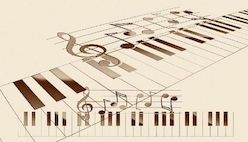
3. The musical intervals
Another basic concept of music theory is the interval.
An interval is the generic distance in pitch between two tones. Since in music it is essential to know exactly the relation in pitch between two sounds we need a precise way to name intervals.
Any interval is made up of two names: the generic name and the specific name.
Being able to recognize them is very important if we want to study harmony and composition.
Music Reading
If we want to perform a song or even compose music, we need to read and write music. For this reason it essential to know the musical alphabet.
To understand the musical alphabet we must know the properties of sound: pitch, duration and intensity.
All we need are some symbols to graphically represent these three properties.
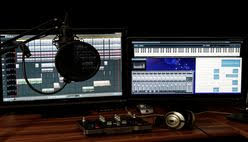
1. The notes and the clefs
To represent pitch we need some symbols called notes which are placed on a system of five lines and four spaces (the staff).
As a system of reference, we need to write another symbol (the clef) at the beginning of the staff.
The clef allows us to know the exact correspondence between the notes and the pitch.
There are many kinds of clefs such as treble clef, bass clef, soprano clef, baritone clef…
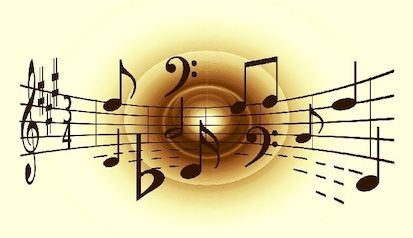
2. The rhythmic figures
We can write notes of different duration only if we introduce some symbols to differentiate them.
These symbols are called rhythmic figures and allow us to know the exact duration of the sound.
There are other very important elements that we need to know to represent the duration of sound. These are the beats, the bar and the time signature.
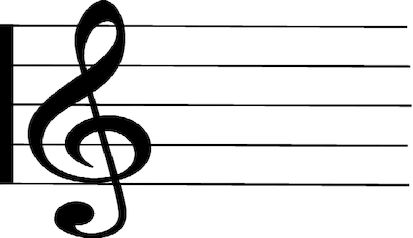
3. The dynamics and the tempo indications
To represent the intensity of the sound we need other essential symbols: these are called dynamics and are made up of one or two letters of the alphabet.
For example the symbol f means that we must play aloud, while the symbol p indicate the sound must be performed softly.
Of course there are some intermediate symbols like mf (mezzo forte, meaning not too loud, or mezzo piano which means not too softly).
In music there are also some signs to represent the increasing (cresc.) or decreasing (dim.) of the intensity of sound.
Finally we find some symbols to represent the speed and the character of a piece (for example Adagio means very slowly, Allegro means very quickly) and to indicate even the increasing and decreasing of the speed itself (accelerando means playing progressively faster or rallentando means playing progressively more slowly).
Go to the video lessonsMusical Harmony and chords
Another essential topic of Music Theory is harmony: we can say that harmony is the groundwork on which every piece is built.
To be able to compose or to arrange a song we need to know it in depth.

1. The chord: superposition of intervals
The base of Harmony is made up of chords.
A chord is the simultaneous producing of at least three tones (or notes).
There are different kind of chords:
- Major chords: the interval between the first two notes is a major third
- Minor chords: the interval between the first two notes is a minor third
- Diminished chord: there is a diminished fifth interval between the first and third note
- Augmented chord: there is an augmented fifth intervalbetween the first and third note
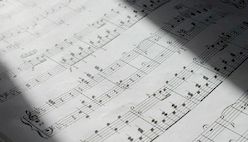
2. Basic chords: triads built on a scale
By working in a certain scale we can obtain the same number of chords as the numbers of degrees of the scale itself.
For example in c major scale you can build seven different chords each on a different degree of the scale.
To build a chord we only need to superpose third intervals using the notes of the scale: for example if we want to build a chord on the second degree of c major scale I start from d (which corresponds to the second degree) then superposing two thirds obtaining F and A which are the other notes of the chords. So this chord is made up of D F A.
It is very important to notice that no chord has an absolute value, but depending on the scale it is used, can have different functions.
For example C major chord has a tonic function in C major scale (since it is build on the first degree of that scale), but a dominant function in F major scale (in F major, the C note is the fifth degree, so the dominant).
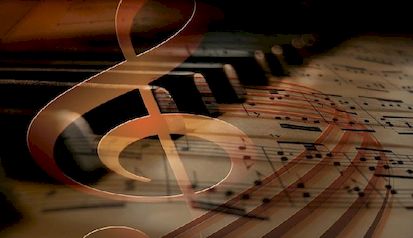
3. Using the bass: chord inversions
According to the Overtones Theory depending on the note that we use in the bass, different results are obtained even by playing the same chord.
For example by playing c major chord you can choose between three different notes in the bass: C (in this case the chord is in ‘root position’), E (first inversion) and G (second inversion).
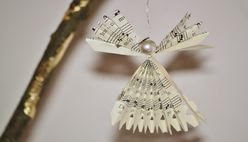
4. More complex chords
If we want to obtain more complex chords we only need to superpose other thirds to the basic triad: in this way we can obtain seventh chords (made up of four notes), ninth chords (five notes), eleventh chords (six notes) and thirteen chords (seven notes).
We can use more complex chords in two different ways:
- Following the Classical Harmony principles: the resolution of dissonant chords. Since these chords are considered dissonant, we need to resolve them to a consonant chord.
- They are used only to give our music a more effective flavor.

5. Modulation: switching from one key to another
The modulation is the switching from one key to another. This is one of the most effective tool for any composer.
There are many different ways to modulate but perhaps the simplest one is using pivot chords, which means that we can use a chord having a role in one key and a different function in another key (for example c major is a tonic chord in C major key and a dominant chord in F major).
In this way switching modulating from one key to another can be very smooth and effective.
Go to the video lessonsComposition and arrangements
One of the most effective way of composing is the following: starting from a chord progression, we can compose the melody.
So which notes can be used to compose the melody other than the notes that are part of the chords?
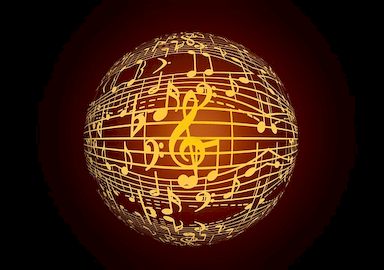
1. How to compose a melody: non-harmonic tones
To be able to compose a melodic theme starting from a chord progression we need to know the nonharmonic tones: these are all the notes which are not part of the chord but that can be used in composing a theme.
There are different kind of non harmonic tones:
- Passing tones: allow to give the air a linear trend
- Auxiliary tones: allow to have a change of direction in the melody
- Escape tones and reaching tones: using them we can mix conjunct and disjunct motion
- Appoggiatura and suspensions: can change the harmonic result
It is important to know the in depth so to be able to mix them in a very balanced way: in this way we can compose beautiful melodies.

2. The harmonic structure: building chord progressions
Since chords are the basis of every musical piece we need to be able to create effective chord progressions.
To do this we must know the function of each chord of any key and be able to use also altered degrees of any scale. Knowing how to build the harmonic structure of a song also allows us to compose a chord progression on a musical theme, which is called harmonization.
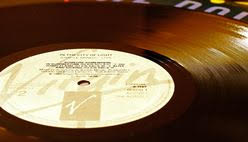
3. How to practice and find a composing method: composing exercises
We need a composing method to compose. Since there is not only one method, everyone has to find his own.
To do this it is advisable to practice a lot even with short pieces or some exercises. A very effective practice consists in composing some short motives trying to improve them day by day.
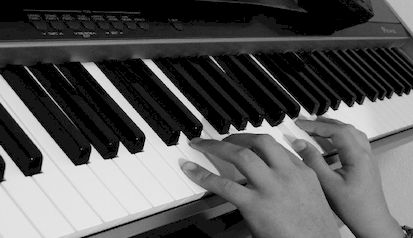
4. How to create an accompaniment and arrangement
Once we have found the melody and the harmony we need to dress them in the best way.
Depending on the number of instruments that we write for, there are many different kinds of arrangements: we can arrange our piece for an orchestra or just for a few instruments (guitar, keyboard, drums and bass).
A very useful practice is learning to create an arrangement for piano: writing an accompaniment for piano, we will learn many general topics which are essential to create a whole arrangement for any kind of music.
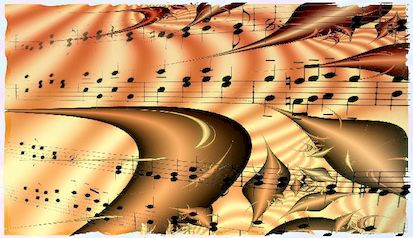
5. Creating a score and mixing different parts
If we want to write for an orchestra (which is made up of a high number of instruments), we need to compose many different lines one for each instrument (or group of instruments).
In this case we need to learn another essential topic of Music Theory: the Counterpoint.
Learning the counterpoint we will be able to combine different melodic lines in a very effective way.
How to start studying for free
It is possible to follow the first music theory lessons for free. All you need to do is register on the “free” profile.
Doing so, you will be able to access lots of information that you might find very useful. To register for free to music theory online courses click on the following button:
